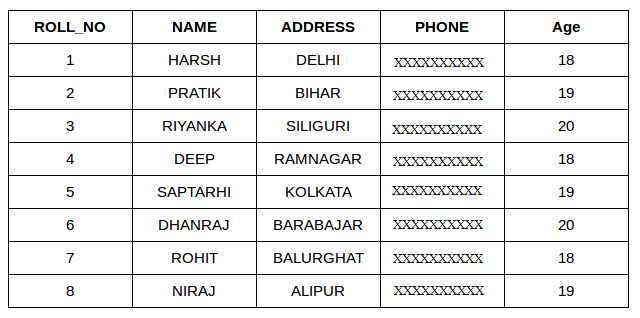Join over 100students who have taken the course. Take the Course For Free Now! Access All Free Courses. When to use a join in SQL? How do you join two tables together in SQL?
Is there any difference in syntax between PostgreSQL or SQL? SQL HOME SQL Intro SQL Syntax SQL Select SQL Select Distinct SQL Where SQL An Or, Not SQL Order By SQL Insert Into SQL Null Values SQL Update SQL Delete SQL Select Top SQL Min and Max SQL Count, Avg, Sum SQL Like SQL Wildcards SQL In SQL Between SQL Aliases SQL Joins SQL Inner Join SQL Left Join SQL Right Join SQL Full Join SQL Self Join SQL. A SQL JOIN combines records from two tables. A JOIN locates related column values in the two tables.
A query can contain zero, one, or multiple JOIN operations. APPLIES TO: SQL Server Azure SQL Database Azure Synapse Analytics (SQL DW) Parallel Data Warehouse SQL Server performs sort, intersect, union, and difference operations using in-memory sorting and hash join technology. SQL provides many kinds of joins such as inner join , left join , right join , full outer join , etc. This tutorial focuses on the inner join.
The inner join clause links two (or more) tables by a relationship between two columns. An SQL join clause - corresponding to a join operation in relational algebra - combines columns from one or more tables in a relational database. It creates a set that can be saved as a table or used as it is. This join is used to retrieve rows from two or more tables by matching a field value that is common between the tables.
The fields you join on must have similar data types, and you cannot join on MEMO or OLEOBJECT data types. The simplest Join is INNER JOIN. SQL JOINS are used to retrieve data from multiple tables. This keyword will create the result-set by combining all rows from both the tables where the condition satisfies i. Another type of join is called an Oracle LEFT OUTER JOIN.

Introduction to SQL Server LEFT JOIN clause. The LEFT JOIN clause allows you to query data from multiple tables. It returns all rows from the left table and the matching rows from the right table.
If no matching rows found in the right table, NULL are used. SQL provides several types of joins such as inner join , outer joins ( left outer join or left join , right outer join or right join , and full outer join ) and self join. There are four basic types of SQL joins: inner, left, right, and full. The easiest and most intuitive way to explain the difference between these four types is by using a Venn diagram, which shows all possible logical relations between data sets.
In standard SQL , they are not equivalent. In general, parentheses can be ignored in join expressions containing only inner join operations. Syntax diagram - INNER JOIN. Here is an example of inner join in SQL between two tables.
I'm responsible for some old T- SQL code, and I've noticed that a few queries return incorrect result sets. INNER JOIN is used with an ON clause, CROSS JOIN is used otherwise. ANSI-compliant outer- join syntax was added. Home Articles Misc Here.
SQL for Beginners (Part 5) : Joins. This is the fifth part of a series of articles showing the basics of SQL. In this article we take a look at some of the common joins, both ANSI and non-ANSI, available in SQL.
SQL - INNER JOINS - The most important and frequently used of the joins is the INNER JOIN. Id ORDER BY TotalAmount This will list all customers, whether they placed any order or not.
Nincsenek megjegyzések:
Megjegyzés küldése
Megjegyzés: Megjegyzéseket csak a blog tagjai írhatnak a blogba.